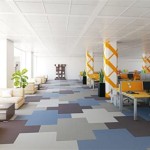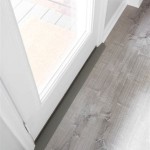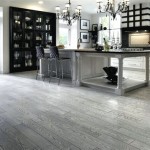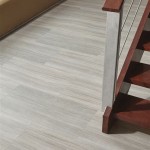Understanding Tiles and Flooring: A Comprehensive Guide
Tiles and flooring are fundamental elements in building design and interior aesthetics. They serve not only a functional purpose, providing a durable and walkable surface, but also contribute significantly to the overall ambiance and style of a space. Selecting the appropriate tiles and flooring option requires careful consideration of various factors, including material properties, installation requirements, maintenance needs, and budget constraints. This article provides a comprehensive overview of different types of tiles and flooring, highlighting their key characteristics and applications.
The market offers a wide array of tile and flooring options, each possessing unique advantages and disadvantages. Understanding these differences is crucial for making informed decisions that align with specific needs and preferences. Factors such as foot traffic, moisture levels, and desired aesthetic play a significant role in determining the most suitable choice.
Types of Tiles
Tiles are generally categorized based on their material composition and manufacturing process. Common types include ceramic, porcelain, stone, and glass tiles, each offering distinct characteristics in terms of durability, water resistance, and aesthetic appeal.
Ceramic tiles are among the most widely used options due to their versatility and affordability. They are manufactured from clay that is fired at high temperatures, resulting in a durable and relatively low-maintenance surface. Ceramic tiles are suitable for a variety of applications, including floors, walls, and backsplashes. They are available in a wide range of colors, patterns, and sizes, allowing for diverse design possibilities. However, ceramic tiles are generally less dense and more porous than porcelain tiles, making them more susceptible to water absorption and cracking in high-traffic areas.
Porcelain tiles are a denser and more durable alternative to ceramic tiles. They are manufactured from a finer clay mixture and fired at even higher temperatures, resulting in a vitrified surface that is highly resistant to water absorption, staining, and wear. Porcelain tiles are suitable for both indoor and outdoor applications, including high-traffic areas such as entryways and commercial spaces. Their inherent strength and resistance to moisture make them an excellent choice for bathrooms, kitchens, and patios. Porcelain tiles can also mimic the appearance of natural stone, wood, and other materials, providing a wide range of aesthetic options.
Stone tiles offer a natural and elegant aesthetic, bringing a sense of luxury and sophistication to any space. Common types of stone tiles include granite, marble, slate, and travertine. Each type of stone possesses unique characteristics in terms of color, texture, and veining. Granite tiles are known for their exceptional durability and resistance to staining, making them suitable for high-traffic areas such as countertops and flooring. Marble tiles offer a classic and timeless aesthetic, but are more porous and susceptible to scratching and staining than granite. Slate tiles provide a rustic and textured appearance, while travertine tiles feature a distinctive pitted surface. Stone tiles require regular sealing and maintenance to protect them from moisture and staining.
Glass tiles are a popular choice for decorative accents and backsplashes, adding a touch of elegance and sophistication to interior spaces. They are available in a wide range of colors, shapes, and sizes, allowing for creative and customized designs. Glass tiles are non-porous and easy to clean, making them suitable for areas that are exposed to moisture, such as bathrooms and kitchens. However, glass tiles are generally not as durable as ceramic or porcelain tiles and are not recommended for high-traffic flooring applications.
Types of Flooring
Beyond tiles, numerous other flooring materials cater to diverse needs and aesthetic preferences. These options include hardwood, laminate, vinyl, carpet, and concrete, each offering distinct advantages and disadvantages in terms of durability, maintenance, and cost.
Hardwood flooring provides a warm and inviting aesthetic, adding a touch of natural beauty to any space. It is available in a variety of wood species, each possessing unique grain patterns, colors, and hardness levels. Hardwood flooring is durable and long-lasting, but it requires regular maintenance to protect it from scratches, dents, and moisture damage. Engineered hardwood flooring is a more stable alternative to solid hardwood, consisting of a thin layer of hardwood veneer bonded to a plywood or composite core. Engineered hardwood is less susceptible to expansion and contraction due to changes in humidity, making it suitable for areas with fluctuating moisture levels.
Laminate flooring offers a cost-effective alternative to hardwood, providing a similar aesthetic at a fraction of the price. It consists of a photographic image of wood or stone laminated onto a composite core. Laminate flooring is durable and scratch-resistant, making it suitable for high-traffic areas. It is also easy to install and maintain. However, laminate flooring is generally less resistant to moisture than hardwood or vinyl and is not recommended for bathrooms or kitchens.
Vinyl flooring is a versatile and affordable option that is available in a variety of styles and designs. It is made from synthetic materials such as polyvinyl chloride (PVC), making it highly resistant to water, staining, and wear. Vinyl flooring is suitable for a wide range of applications, including bathrooms, kitchens, and basements. It is available in sheet, tile, and plank formats, offering various installation options. Luxury vinyl tile (LVT) and luxury vinyl plank (LVP) are premium options that mimic the appearance of natural stone and wood, providing increased durability and aesthetic appeal.
Carpet provides a soft and comfortable surface, adding warmth and sound insulation to interior spaces. It is available in a wide range of colors, textures, and styles, offering diverse design possibilities. Carpet is suitable for bedrooms, living rooms, and other areas where comfort is a priority. However, carpet requires regular cleaning and maintenance to prevent the buildup of dirt, dust, and allergens. Different types of carpet fibers, such as nylon, polyester, and wool, offer varying levels of durability and stain resistance.
Concrete flooring offers a modern and industrial aesthetic, providing a durable and low-maintenance surface. It can be stained, polished, or sealed to create a variety of finishes. Concrete flooring is suitable for both residential and commercial applications, including living rooms, kitchens, and retail spaces. It is highly resistant to wear and tear, making it an excellent choice for high-traffic areas. However, concrete flooring can be cold and hard underfoot, requiring the use of rugs or other soft materials for added comfort.
Key Considerations for Tile and Flooring Selection
Choosing the right tiles and flooring requires careful consideration of several key factors. These include the intended use of the space, the level of foot traffic, the presence of moisture, the desired aesthetic, and the budget constraints. Evaluating these factors will help narrow down the options and identify the most suitable materials for a given project.
The intended use of the space is a primary consideration. High-traffic areas, such as entryways and hallways, require durable and scratch-resistant materials, such as porcelain tile, stone tile, or luxury vinyl. Bathrooms and kitchens require water-resistant materials, such as porcelain tile, vinyl flooring, or sealed stone tile. Bedrooms and living rooms may benefit from softer and more comfortable options, such as carpet or hardwood.
The level of foot traffic also plays a significant role in material selection. High-traffic areas require materials that can withstand heavy wear and tear, such as porcelain tile, stone tile, or commercial-grade vinyl. Low-traffic areas may be suitable for less durable and more decorative options, such as ceramic tile or hardwood.
The presence of moisture is another critical consideration. Areas that are exposed to moisture, such as bathrooms, kitchens, and basements, require water-resistant materials, such as porcelain tile, vinyl flooring, or sealed stone tile. Hardwood and laminate flooring are generally not recommended for these areas due to their susceptibility to water damage.
The desired aesthetic is a subjective factor that plays a significant role in the overall design of a space. Different types of tiles and flooring offer a wide range of colors, patterns, and textures, allowing for diverse design possibilities. Consider the overall style of the space and select materials that complement the existing decor.
Budget constraints are an inevitable consideration in any building or renovation project. Different types of tiles and flooring vary significantly in price, depending on the material, quality, and installation requirements. Establish a realistic budget and prioritize materials that meet the essential needs and aesthetic preferences while remaining within the allocated funds.
Installation costs should also be factored into the overall budget. Some types of tiles and flooring require professional installation, which can add significantly to the overall cost. DIY installation may be possible for some materials, but it requires careful planning and execution to ensure a successful outcome.
Maintenance requirements should also be considered when selecting tiles and flooring. Some materials require regular cleaning and sealing to maintain their appearance and durability. Others are relatively low-maintenance and require minimal upkeep. Consider the time and effort required to maintain the chosen materials and select options that align with your lifestyle and preferences.
By carefully considering these key factors, it is possible to select the right tiles and flooring for any project, creating a space that is both functional and aesthetically pleasing.

The Pros Cons Of Ceramic Tile Flooring Ocotillo Services

Tile Vs Wood Flooring Major Differences Pros Cons And Costs Forbes Home

Tile Flooring Guide Types And S Forbes Home

Best Tile For Kitchen Floor How To Make The Right Choice

Factors To Consider While Choosing Vitrified Flooring Tiles

Ceramic Floor Tile Flooring Cost Benefits Installation

Why You Must Choose Wood Floor Tiles Over Wooden Flooring

3 Ways To Choose Floor Tiles Wikihow Life

What Is Porcelain Tile Flooring America

Ceramic Flooring That Can Be Installed 8 Times Faster Than Conventional Tiling Archdaily
Related Posts








